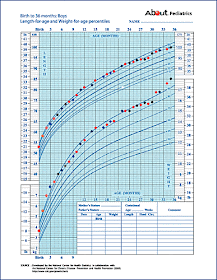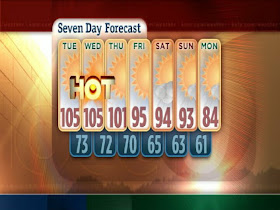
Every now and then I type the words:
Agenesis of the Corpus Callosum
on a google search and look for any new
information or articles.
Well, tonight I found a story in the Fort
Frances Times Online about a four year old
boy, Tanner, who is completely missing his
corpus callosum and his septum pellucidum
that I would like to share with you."Young Tanner now 'just a typical kid'
Wednesday, August 19, 2009
By: Heather Latter, Staff Writer
Tanner McCormick has spent the first few
years of his life battling the effects of
being born with an interhemispheric cyst
inside his brain, but miraculously the
now four-year-old is just like any regular
kid.
“He likes to do all the things a typical
boy his age likes to do,” said his mom,
Kristen. “He just doesn’t stop all day
long—it’s amazing.
“And he has such an incredible imagination.”
The youngster likes watching “The Wiggles,”
playing video games, going swimming and
fishing, and telling knock-knock jokes.
But his favourite toy right now is the
small drum set he received for his birthday
on Aug. 4 because he can “rock out” on it.
Tanner also has a very good memory.
“He is really good at remembering names
and people—he doesn’t forget anything,”
his dad, Mike, explained.
“He brings out the best in everyone,” added
Kristen. “He’s so friendly. He has to stop
and talk to everyone when we go to the store.”
But although Tanner is doing extremely well
today, he’s had a life full of struggles.
When he was born, the cyst, which was
discovered when he was about four months
old, had made his head swell to the size
of an average one-year-old’s. He suffered
from two conditions called Agenesis of the
Corpus Callosum and Agenesis of the Septum
Pellucidum—meaning he was missing two parts
of his brain.
The cyst had halted the natural development
of particular areas of the brain.
Due to these conditions, Tanner had a shunt
inserted into his brain. While he kept
pushing onwards, the youngster has struggled
with other complications, such as poor
eyesight and ear infections to name a few.
The doctors also suspected Tanner would have
serious delays and handicaps in his development,
both physically and intellectually. But he’s
certainly overcame these obstacles, perhaps
being just slightly behind his peers.
Tanner didn’t seem to have many problems
speaking or with vocabulary, and he’s
obviously a very smart boy. He did spend
a year using a walker or “scooting” to get
around, but just before last Christmas he
began walking well on his own.
“Now if there are people who don’t know his
story, they don’t suspect anything is wrong,”
his dad remarked.
“But we still go to Winnipeg every three
months and there is a pediatrician that
follows him,” explained his mom, noting
that Tanner has had a number of surgeries.
“Unfortunately, even simple things aren’t
so simple with him.”
Tanner had tubes put in his ears three
times and had his adenoids removed, but
that caused some abnormal bleeding. In fact,
from last August-December, the youngster
lost 12 pounds and was very sick.
“You get thrown back into reality,” mom,
Kristen, said. “When he gets sick so quick,
it’s a reminder how life can change.
“We try not to take for granted how well
he is doing.”
While keeping a close watch on Tanner’s
eyesight, doctors also have been looking
for seizure activity in his brain and also
the possibility of scoliosis.
Kristen stressed the doctors in Winnipeg
have been amazed by the progress Tanner has
made in four short years.
“They just sit and watch him in amazement,”
Mike recalled.
The couple indicated the doctors can’t
fully explain why Tanner has been able to
overcome physical and intellectual obstacles,
when they originally believed he would never
walk or talk.
“The only way they can explain it is that
his brain has been able to find new pathways
since there are many ways the neurons can
connect,” Kristen noted.
Although Tanner would be eligible to start
junior kindergarten this year, his parents
have decided to wait another year.
“Intellectually, he’d be all right,” Kristen
said, though citing he may have a problem
physically. Besides having only been walking
on his own for less than a year, Tanner has
trouble with transition.
And since he doesn’t forget anything, if he
were to fall or get bumped, it could lead
to a negative experience at this point.
“I’m lucky to be able to stay home with him,”
his mom added.
But even though Tanner won’t be joining his
peers at school this year, he certainly will
be a busy boy. In fact, he’s already had
many exciting experiences and accomplishments
under his belt.
He’s flown in an airplane, and on a recent
fishing excursion caught a “big, big, big”
walleye. He also takes private swimming
lessons and will begin five-pin bowling
this fall.
Tanner even was a special guest and
participant in the annual Ronald McDonald
House Hope Couture Fashion Show and Dinner
in Winnipeg back in May. “It was a really
big deal. There was over 600 people there,”
his mom said, noting Tanner, along with his
brother, Shaye, walked the catwalk wearing
their spiffy outfits.
“It was so nice to be a part of it since
I don’t know where we’d be without the
Ronald McDonald House,” she remarked.
And most recently, Tanner was crowned the
2009 Mini-King at the Emo Fair last week.
“We want to give him the opportunity to do
anything he wants to do,” Kristen stressed.
“We don’t want him to feel any different.”
She also said Tanner’s brothers, Shaye and
Jonah, have been incredible with him—and
that the support they’ve received from family,
friends, and the community has been
overwhelming.
“The community is just amazing,” Kristen
enthused. “People are always showing their
concern and asking for updates.”
She admitted the family sometimes struggles
with the questions of why and how this
happened to Tanner.
“But all I can come up with is everything
happens for a reason and I would never
change any part of it,” she said. “We just
take it one day at a time.
“There are some days that are rough and we
know his journey is far from over, but it
makes every moment worth it.”
Young Tanner now 'just a
typical kid'Read a previous article about
Tanner at 1 year old






























